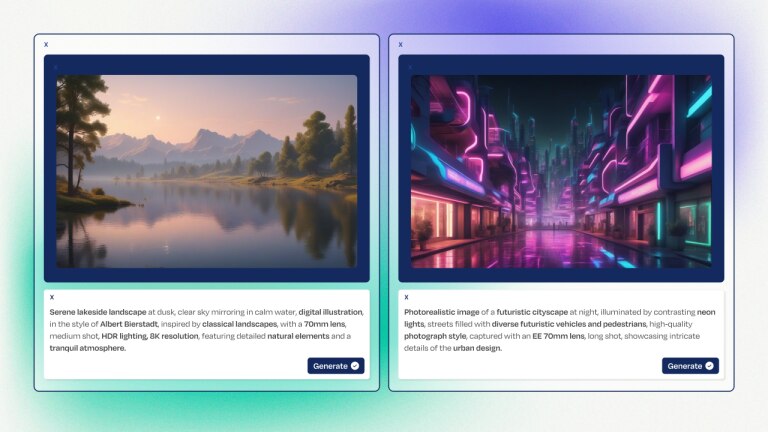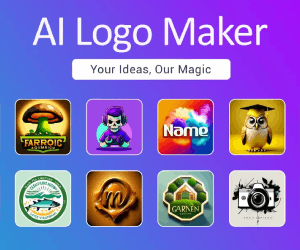How to write an AI art prompt
For example, rather than typing “a dog”, it’s better if you try to describe how is the dog that you are picturing in your mind. What color is it? Size? Is it cute? To write a more effective AI art prompt, especially for achieving photorealistic results, consider these key elements as a guide:
- Scene Description: Start with a clear depiction of the main scene. This includes the setting (like a serene lakeside) and the time of day (such as dusk). Providing this context sets the stage for the AI.
- Atmospheric Details: Convey the mood or atmosphere. Words that describe the sky, lighting conditions, and the overall ambiance (like a clear sky mirroring in calm water) add depth and emotion to your prompt.
- Artistic Style Reference: Mentioning a specific artistic style or artist (e.g., Albert Bierstadt) guides the AI towards a certain aesthetic, influencing the art’s overall look and feel.
- Photographic Elements: Including camera settings such as lens type (70mm lens), shot type (medium shot), and lighting style (HDR lighting) helps in achieving a more photorealistic quality. These details guide the AI in mimicking the nuances of photography. Learn more about this with our post Key photography parameters to master your AI prompts.
- Resolution and Quality Specifications: Indicating a desired resolution (like grainy or 8K) ensures that the final image meets your quality expectations, especially important for detailed scenes.

Tips to write better prompts
Writing an effective AI art prompt involves clarity, specificity, and creativity. Being precise helps the AI better understand and execute your vision, but keep in mind these additional guidelines:
- Simple Language: Use easily recognizable keywords. Avoid complex or rare words.
- Brevity and Clarity: Aim for concise prompts. While a range of 3 to 7 words is ideal, avoid excessive details that could overburden the AI.
- Utilize Adjectives: Descriptive adjectives can effectively convey the desired subject, style, and composition of your art.
- Avoid Contradictions: Steer clear of terms with opposing meanings, like “realistic” and “abstract” in the same prompt, to prevent confusing the AI.
- Leverage Other AI Tools: Use AI copywriting tools, such as Freepik’s AI Writer, for generating art prompts. Let these advanced systems assist you in creative processes.
AI art prompt examples to try
Now, let’s get to work with these prompts. Use them as guides to write down your next prompts, and reach new heights!
- Serene lakeside landscape at dusk, clear sky mirroring in calm water, digital illustration, in the style of Albert Bierstadt, inspired by classical landscapes, with a 70mm lens, medium shot, HDR lighting, 8K resolution, featuring detailed natural elements and a tranquil atmosphere
- Photorealistic image of a futuristic cityscape at night, illuminated by contrasting neon lights, streets filled with diverse futuristic vehicles and pedestrians, high-quality photograph style, captured with an EE 70mm lens, long shot, showcasing intricate details of the urban design
- A portrait of a woman dressed in elegant Renaissance attire, standing gracefully in an Italian vineyard, golden sunlight filtering through the grapevines, in the style of a classic painting, high-quality photograph, captured with a short telephoto lens, close-up, focusing on the rich textures of her attire and the lush greenery of the vineyard
- Cartoon illustration of an adorable, fluffy dog, with big sparkling eyes and a wagging tail, set in a colorful garden, in the style of a cartoon animation, bright and cheerful, ideal for a children’s book, captured with a wide-angle lens, medium shot, emphasizing the cuteness and playful nature.

And if you want more prompts, take a look at 50 Creative text prompts for AI images.
© 版权声明
The copyright of the article belongs to the author, please do not reprint without permission.
相关文章
暂无评论...

